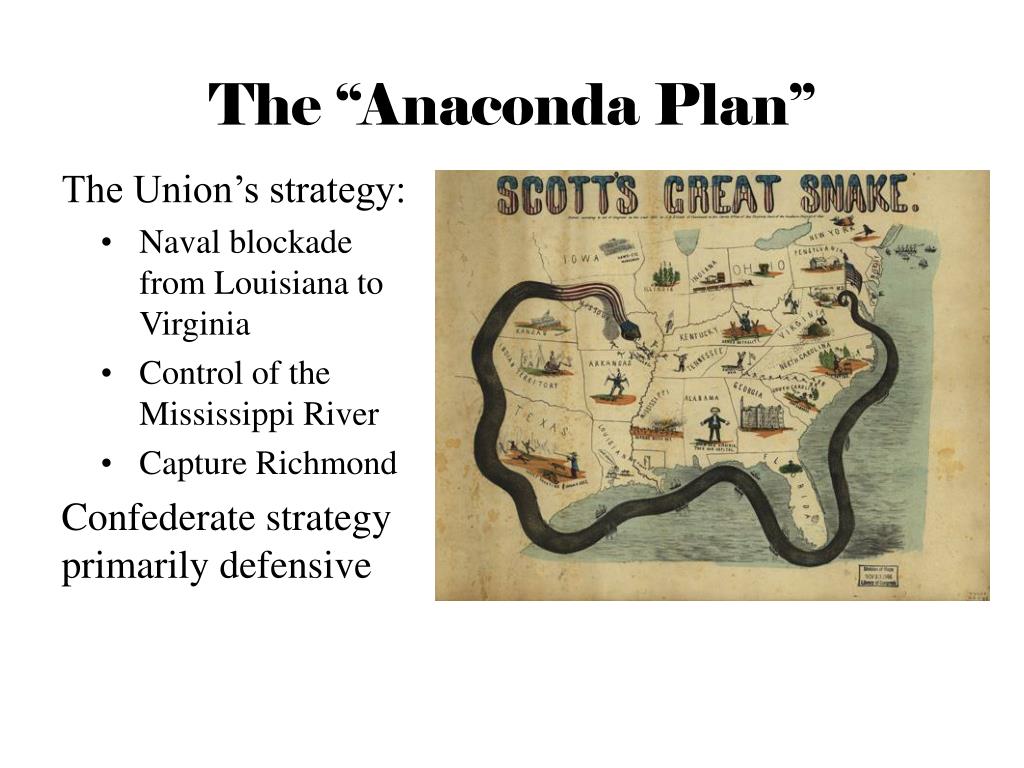

Scott's plan had elements similar to a plan created before the Civil War. When they fell, the river would be in US hands from its source to its mouth, and the rebellion would be cut in two. The culminating battle would be for the forts below New Orleans. It would be followed by a more traditional army, marching behind to secure victories. A spearhead, a relatively small amphibious force of army troops transported by boats and supported by gunboats, should advance rapidly, capturing the Confederate positions down the river in sequence. Secondly, a strong column of perhaps 80,000 men should use the Mississippi River as a highway to thrust completely through the Confederacy. First, all ports in the seceding states were to be rigorously blockaded. In the early days of the Civil War, Scott's proposed strategy for the war against the South had two prominent features. The snake image caught on, giving the proposal its popular name. Because the blockade would be rather passive, it was widely derided by a vociferous faction of Union generals who wanted a more vigorous prosecution of the war and likened it to the coils of an anaconda suffocating its victim. Proposed by Union General-in-Chief Winfield Scott, the plan emphasized a Union blockade of the Southern ports and called for an advance down the Mississippi River to cut the South in two. Sin.The Anaconda Plan is the name applied to a strategy outlined by the Union Army for suppressing the Confederacy at the beginning of the American Civil War.

Gideon Welles, Secretary of the Navy, USAīy adopting the Anaconda Plan, Lincoln ran the risk of committing diplomatic suicide. And the Anaconda Plan could only succeed over time: the South would not starve overnight, so patience was an essential part of Scott's strategy. For the plan to succeed, it would be necessary to blockade more than 3,500 miles of coast from Virginia to Mexico and up the Mississippi from New Orleans to New Madrid Bend. Named for the South American snake that kills its prey by strangulation, Scott's plan was to strangle the South into submission by cutting its supply lines to the outside world. The primary strategy of Scott's plan was to create a complete naval blockade of the Southern states. In order to restore the Union with as little bloodshed as possible, he favored a relatively nonaggressive policy.

General Scott, a native Virginian, believed that the majority of Southerners desired a complete union with the United States. General Winfield Scott, commanding general of the Union Army General Winfield Scott, commanding general of the Union army, proposed a plan of battle that became known as the Anaconda Plan. At the onset of the Civil War, President Abraham Lincoln met with his generals to devise a strategy by which the rebellious states of the Confederacy could be brought back into the Union.


 0 kommentar(er)
0 kommentar(er)
